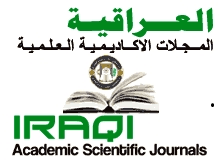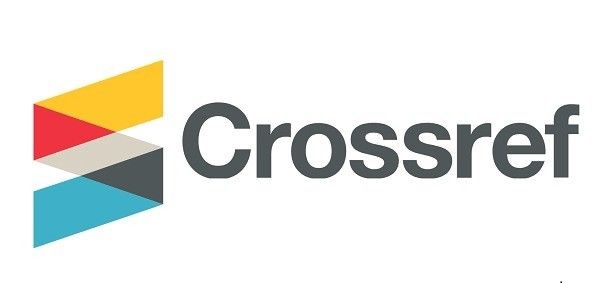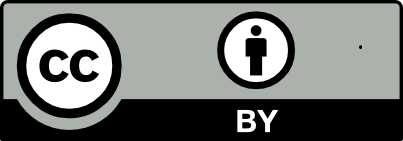Health risk assessment of lead, cadmium, and copper in meat and liver from local and imported sheep in Basra, southern Iraq
Keywords:
Heavy metal Estimated daily intake (EDI) Health hazards THQ Hazard index HI.Abstract
Three hundred samples of thigh meat and livers from local sheep (from both official and random slaughter) and imported Australian thighs were gathered in Basra city throughout the summer and winter seasons. The findings indicated an elevation in the mean concentrations of all examined components in the random slaughter source. The highest average concentration of lead was in the random slaughter source of thigh and liver in summer (1.38±0.404 and 2.2±0.71) mg/kg respectively. While in winter (1.55±0.43 and 2.06±0.6) mg/kg respectively.and, the highest average concentration of cadmium was for the randomly selected thigh and liver sources were 0.144 ± 0.06 and 0.19 ± 0.08 mg/kg, respectively. In the winter, it was 0.101 ± 0.06 mg/kg while in the summer, it was 0.16 ± 0.062 mg/kg. The copper concentration in the official slaughter source of thigh and liver during summer was (3.65 ± 10.92 and 27.883 ± 109.59) mg/kg, respectively. As for winter, it was (14.02 ± 16.57 and 32.003 ± 96.71) mg/kg, respectively. In contrast, The highest average concentration of copper was recorded for the random slaughter source during the summer (17.008± 31.13 and 51.963± 118.17) mg/kg, respectively. While during the winter, it reached (10.262± 16.494 and 42.101± 122.28) mg/kg, respectively. We computed the EDI of nutrients and compared it to the TDI, the THQ, and the HI for thigh lamb, as well as the risk quotient and risk index, respectively. Both adults and children had EDI values that were more than TDI, and THQ values that were lower than 1.0 (<1). That is, there are slight health risks that are not significant for adults, but they are almost significant for children. The HI values were less than 1.0 (<1) for adults. That is, the non-carcinogenic health risks are very small. However, the HI for children was greater than 1.0 (≥1), so there is a possibility of non-carcinogenic adverse health effects after consuming lamb meat
Downloads
References
A. Hazrat, K. Ezzat, and Ilahi Ikram, Environmental Chemistry and Ecotoxicology of Hazardous Heavy Metals: Environmental Persistence, Toxicity, and Bioaccumulation, J. Chem., vol. (2019), no. Cd, 1–14, 2019, [Online].DOI: https://doi.org/10.1155/2019/6730305.
H. T. Al-Saad, H. A. Kadhim, and M. M. Al-Hejuje, Heavy Elements in Soil of West Qurna-1 Oil Field in Basrah Governorate, Southern Iraq, J. of Pollution, vol. 4 (2022) 2020–2022, 2021.
G. I. Edo, P. O. Samuel, G. O. Oloni, G. O. Ezekiel, V. O. Ikpekoro, P. Obasohan, et al, Environmental persistence, bioaccumulation, and ecotoxicology of heavy metals. Chemistry and Ecology 40, no. 3 (2024) 322-349.
R. S. Ahmad, A. Imran, and M. B. Hussain, Nutritional Composition of Meat, Meat Sci. Nutr., (2018) 1-13.DOI: http://doi.10.5772/intechopen.77045
H.A. Al-saied, A.M. (2021). An analytical study of the marketing of dairy buffaloes in Dakahlia Governorate. J. of Agricultural Economics and Social Sci., 12(10), (2021) 397-401. (Translated from Arabic reference).
Y. He, X. Yang, J. Xia, L. Zhao, and Y. Yang, Consumption of meat and dairy products in China: A review, Proc. Nutr. Soc., vol. 75, no. 3, (2016) 385–391. DOI: https://doi.org/10.1017/S0029665116000641
K. Raj, and A. P. Das. Lead pollution: Impact on environment and human health and approach for a sustainable solution. Environmental Chemistry and Ecotoxicology 5 (2023) 79-85. DOI: https://doi.org/10.1016/j.enceco.2023.02.001.
M. S. Al-Enazi, I. I. Lazim, and H. H. Ali, Ability of Cyperus papyrus in the bioaccumulation of some heavy elements in the Shatt Al-Basrah canal, Iraq, Casp. J. Environ. Sci., vol. 20, no. 3 (2022) 603–609.DOI: https://doi.org/10.22124/CJES.2022.5704.
A. Y. Hammood, I. K. Mohammed, and A. A. Majeed, Removal of Cd(II) Ions from Aqueous Solutions using adsorption By Bentonite Clay and Study the Adsorption Thermodynamics, Pollution, vol. 9, no. 3, (2023) 994–1005.
T. Zerizghi, Q. Guo, L. Tian, R. Wei, and C. Zhao, An integrated approach to quantify ecological and human health risks of soil heavy metal contamination around coal mining area, Sci. Total Environ., vol. 814, (2022) 152653.
C. V. Buturi, R. P. Mauro, V. Fogliano, C. Leonardi, and F. Giuffrida, Mineral biofortification of vegetables as a tool to improve human diet, Foods, vol. 10, no. 2, )2021(1–23. DOI: https://doi.org/10.3390/foods10020223.
P. Srinivasan, R. Madheswaran, R. P. Kumar, G. A. Balasubramaniam, P. Balachandran, M. Sasikala et al., Spontaneously Occurring Chronic Copper Toxicosis in Pattanam Breed of Sheep, Indian J. Anim. Res., vol. 58, no. 2, (2024) 253–258.
WHO. World Health Organization. Guidelines for drinking-water quality. World Health Organization, vol (2), (2002) 84-90.
J. Sneddon, C. Hardaway, K. K. Bobbadi, and A. K. Reddy, Sample preparation of solid samples for metal determination by atomic spectroscopy - An overview and selected recent applications, Appl. Spectrosc. Rev., vol. 41, no. 1, (2006)1–14. DOI:https://doi.org/10.1080/05704920500385445.
R. Moopam, “Manual of oceanographic observations and pollutant analysis methods,” ROPME. Kuwait, vol. 1, (1999) 20.
A. F. S. Catherine F. Gibbons, “IRIS Toxicological Review of Hexavalent Chromium [Cr ( VI )] [CASRN 18540-29-9 ],” Integr. Risk Inf. Syst. Cent. Public Heal. Environ. Assess. Off. Res. Dev. U.S. Environ. Prot. Agency Washington, DC, vol. EPA/635/R-, no. August, (2024).
FAO, Food and Agriculture Organization (2024). FAOSTAT. Available: https://www.fao.org/faostat/en/#country/103.2025.01.030
Us-Epa, Guidance for assessing chemical contaminant data for use in fish advisories, volume 2: Risk assessment and fish consumption limits, 3rd edition, United States Environ. Prot. Agency, Washington, DC, vol. 1, no. 4305, (2000) 823-B-00–008.
USEPA, United States Environmental Protection Agency (2013). Reference dose (RfD): Description and use inhealth risk assessments, Background Document 1A, Integrated risk information system (IRIS); United States Environmental Protection Agency: Washington, DC, 15 March (2013). Available: http://epa.gov/iris/rfd.htm.2025.01.030
USEPA, United States Environmental Protection Agency. Regional Screening Levels (RSLs) -User’s Guide. (2019). Available: https://www.epa. Gov / risk / regional – screening – levels – rsls – users -guide#toxicity.2025.01.030
USDA., Foreign Agricultural Service, China: China Releases Standard Maximum Levels of Contaminants in Foods. (2018). Available: https://www.fas.usda.gov/data/china-china-releases-standard-maximum-levels-contaminants-foods.2025.01.030
K. M. Marzouk, A. A. El Atrach, E. M. M. Ibarhim, and I. S. Shaben. Determination of lead and cadmium in kidney, liver and the muscles of Camels and Sheep slaughtered in Libya. Egyptian Journal of Sheep and Goats Sciences 11, no. 3 (2016) 1-10.
D. J. MacLachlan, K. Budd, J. Connolly, J. Derrick, L. Penrose, and T. Tobin, Arsenic, cadmium, cobalt, copper, lead, mercury, molybdenum, selenium and zinc concentrations in liver, kidney and muscle in Australian sheep, J. Food Compos. Anal., vol. 50, (2016) 97–107. DOI: https://doi.org/10.1016/j.jfca.2016.05.015
W. R. El-Ghareeb, W. S. Darwish, and A. M. A. Meligy, Metal contents in the edible tissues of camel and sheep: Human dietary intake and risk assessment in Saudi Arabia, Jpn. J. Vet. Res., vol. 67, no. 1, (2019) 5–14.
N. C. Oforka, L. C. Osuji, U. I. Onwuachu, and C. Author, Assessment of Heavy Metal Pollution in Muscles and Internal Organs of Chickens Raised in Rivers State , Nigeria, Journal of Emerging Trends in Engineering and Applied Sciences, vol. 3, no. 3, (2012) 406–411.
M. S. Najafi , F. Khoshakhllagh , S. M. Zamanzadeh , M. H. Shirazi , M. Samadi, et al., Characteristics of TSP loads during the Middle East springtime dust storm (MESDS) in Western Iran. Arabian Journal of Geosciences, 7, (2014) 5367-5381.
P. Robert. Mineral levels in animal health: diagnostic data. Sherpa International, Clearbrook, Canada No. Ed. 2. (1994).
FSANZ, Food Standards Australia New Zealand (2023). Available: https://www.health.gov.au/contacts/food-standards-australia-new-zealand-fsanz.2025.01.030
I. V. Johnsen and J. Aaneby, Accumulation of copper and lead in ruminants grazing on a contaminated shooting range in Nordland County, Norway, Environ. Sci. Pollut. Res., vol. 31, no. 7, (2024) 11026–11036.
M. Walter, Trace Elements in Human and Animal Nutrition, 5th edn, vol. 2. Academic Press Inc., Harcourt Brace Jovanovich, Publisher. (1986).
U. A. Birnin-Yauri, M. K. Musa, and S. M. Alhaji. Determination of selected heavy metals in the organs of some animals reared in the gold-mining areas of Zamfara State, Nigeria. J. of Agricultural Chemistry and Environment 7, no. 4 (2018) 188-202.
L.R. Al-Ali, Analysis of measuring the rate of bioaccumulation of some heavy elements in three species of fish in the waters of the Euphrates River (Deir Ezzor Governorate), Faculty of Agriculture, Tishreen University, Al-Baath University J., Volume: 45, Issue 15. (2023). (Translated from Arabic reference).
WHO, (World Health Organization), Evaluation of certain food additives and contaminants. Report of the Fifty Third of the Joint FAO/WHO Expert Committee on Food Additives. Technical Report Series No. 896. Geneva (2000).
FSA (Food Standard Agency), Metals and other elements in processes fish and fish products. Food Survey Information Sheet, (2006) 08/06. WHO, Geneva.
F.A.O., and WHO, Summary report of the seventy-third meeting of JECFA. Joint FAO/WHO Expert Committee on Food Additives, Geneva (2010). Available: http://www.fao.org/ag/agn/agns/jecfa/JECFA73%20Summary%20Report%20Final.pdf.2025.01.030
N. Bortey-Sam, S. M. Nakayama, Y. Ikenaka, O. Akoto, E. Baidoo, Y. B Yohannes et al., Human health risks from metals and metalloid via consumption of food animals near gold mines in Tarkwa, Ghana: Estimation of the daily intakes and target hazard quotients (THQs), Ecotoxicol. Environ. Saf., vol. 111, (2015) 160–167.DOI: https://doi.org/10.1016/j.ecoenv.2014.09.008
National Research Council, and Subcommittee on Poultry Nutrition. Nutrient requirements of poultry: 1994. National Academies Press, (1994).
W. Schmitz, Exposure of children, Encycl. Anc. Hist., no. 4, (2012). Available: https://doi.org/10.1002/9781444338386.wbeah22107.2025.01.030
X. Wang, T. Sato, B. Xing, and S. Tao, Health risks of heavy metals to the general public in Tianjin, China via consumption of vegetables and fish, Sci. Total Environ., vol. 350, no. 1–3, (2005) 28–37.DOI: https://doi.org/10.1016/j.scitotenv.2004.09.044
G. Radoslav and S. Rekanovic, Health Risk Assessment Of Potentially Toxic Metals In Sheep Meat Health Risk Assessment Of Potentially Toxic Metals, J. of Hygienic Engineering and Design, no.43 September, (2023).
Available: https://www.researchgate.net/publication/373825555.2025.01.030
W. S. Darwish , M. A. Hussein , K. I. El-Desoky , Y. Ikenaka, , S. Nakayama, , H. Mizukawa, and M. Ishizuka, Incidence and public health risk assessment of toxic metal residues (cadmium and lead) in Egyptian cattle and sheep meats. International food research J., 22(4) (2015).
S. M. Abd-Elghany, M. A. Mohammed , A. Abdelkhalek , F. S. S. Saad , and K. I. Sallam, Health risk assessment of exposure to heavy metals from sheep meat and offal in Kuwait. J.of food protection, 83, no. 3 (2020) 503-510.
B. Kruszewski, M. W. Obiedziński, and J. Kowalska, Nickel, cadmium and lead levels in raw cocoa and processed chocolate mass materials from three different manufacturers, J. Food Compos. Anal., vol. 66, (2018) 127–135.DOI: https://doi.org/10.1016/j.jfca.2017.12.012.
Downloads
Published
Issue
Section
License
Copyright (c) 2025 Basrah Researches Sciences

This work is licensed under a Creative Commons Attribution 4.0 International License.







